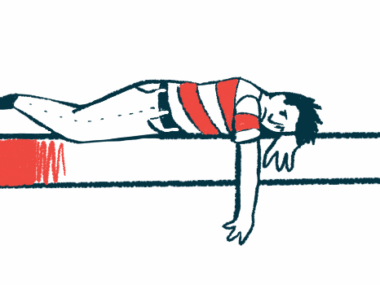Autonomic dysfunction affects life quality for most children with hEDS
Cardiovascular, autonomic symptoms found prevalent in young patients: Study
Written by |

Most children and young adults with hypermobile Ehlers-Danlos syndrome (hEDS) have cardiovascular issues and dysfunction of their autonomic nervous system, or the network of nerves that control unconscious processes, which in turn negatively affects their quality of life, according to a recent study.
Notable issues with the autonomic nervous system include fast heart rate, dizziness, and fatigue when transitioning from lying down to standing, which is a condition called postural orthostatic tachycardia syndrome (POTS).
“The rate of POTS and [autonomic dysfunction] are high in adult and pediatric hEDS populations, and clinicians managing patients with autonomic symptoms or hEDS need to be aware of these comorbidities [coexisting disorders] so they can screen and initiate treatment sooner,” researchers wrote.
The study, “Cardiovascular, autonomic symptoms and quality of life in children with hypermobile Ehlers-Danlos syndrome,” was published in Sage Open Medicine.
hEDS is the most common type of Ehlers-Danlos syndrome. Its symptoms include joint hypermobility, or when joints can move past the normal range of motion; stretchy and fragile skin; and pain in the muscles, bones, and joints.
Autonomic nervous system regulates involuntary bodily processes
People with hEDS may also experience dysautonomia, or issues with the autonomic nervous system, which is a part of the nervous system that regulates involuntary bodily processes such as heart rate, blood pressure, respiration, digestion, and sexual arousal.
“However, there is scant literature on autonomic symptoms in pediatric patients with hypermobile Ehlers-Danlos syndrome,” the researchers wrote.
In the study, researchers in the U.S. characterized cardiovascular and autonomic symptoms in 70 children and young adults with hEDS, followed at an EDS clinic. Patients were a mean age of 15.8 years, and mainly female (89%) and white.
Some 59% of the participants had orthostatic intolerance (inability to tolerate an upright posture due to impaired cardiovascular autonomic function, and which includes POTS), 47% had dysautonomia, and 21% had POTS. Cardiovascular symptoms included tachycardia, or fast heart rate (31%), palpitations (13%), chest pain (14%), and dizziness (9%). Nearly all participants had two or more cardiovascular symptoms (92.9%).
In most patients (82%), heart structure and function were normal, as assessed with an echocardiogram. However, 15% had trivial (trace) regurgitation, which is when the tricuspid valve that separates the upper and lower chambers of the right side of the heart does not close properly and allows a small amount of blood to flow backward when the heart beats.
‘Few patients with hEDS have structural abnormalities on echocardiogram’
“Few patients with hEDS have structural abnormalities on echocardiogram, which suggests that the cardiovascular symptoms experienced by patients are due to autonomic symptoms,” the researchers wrote.
Autonomic dysfunction symptoms were analyzed with the Composite Autonomic Symptom Score-31 (COMPASS-31), where higher scores mean more severe symptoms. Quality of life and general health status were evaluated using the Patient-Reported Outcomes Measurement Information System (PROMIS) pediatric profile-25.
PROMIS assesses domains of anxiety, depressive symptoms, fatigue, pain interference on activities and participation, peer relationships, and physical function. Higher scores on the test indicate worse symptoms.
Having tachycardia was correlated with worse COMPASS-31 and PROMIS scores, indicating that patients with this symptom had more severe autonomic dysfunction and poorer quality of life. In addition, having POTS also correlated with a lower quality of life and worse general health status.
Overall, “this study shows a high percentage of autonomic diagnoses seen in pediatric patients with hEDS and shows that cardiovascular and autonomic symptoms have a negative impact on [quality of life] for patients,” the researchers wrote.







